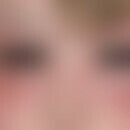DefinitionThis section has been translated automatically.
Silver is an inert, shiny grey precious metal which bears the European approval number E 174 and is approved as a food additive. Silver can be added as a colouring element to certain foods (e.g. to decorate pralines) and cosmetic products(C.I. 77820 INCI) and gives the product a shiny grey colour. Due to the high price, however, silver pigments are rarely used in food. There is no limit for use as food colouring.
General informationThis section has been translated automatically.
Silver is also used to disinfect drinking water. The maximum permissible silver concentration is 0.080 mg/l (WHO limit is 0.1 mg/l).
In nanosilver, the silver particles have an average size of about 50 nm. However, in the case of nanoparticles (< 100 nm), knowledge of their fate and degradation in the body is still limited (question of penetration through the skin). The EU provides for an obligation to declare nanoparticles in cosmetics.
In microsilver the silver particles have an average size of about 10 µm. With this particle size a skin penetration can be excluded. Microsilver is offered in different topical dosage forms as for example in creams and foamed creams in lotions and gels. The concentrations are between 0.05 and 0.5%. Microsilver Externa are propagated for the supportive treatment of inflammatory skin diseases (e.g. atopic eczema).
Textiles coated with silver are successfully used for the supportive therapy of atopic eczema.
Colloidal silver: In alternative medicine, orally applied colloidal silver (particle sizes between 1 nm and 100 nm) is propagated as an agent for a variety of diseases (antiviral, antibacterial or antiparasitic). On the one hand, however, there is a lack of legal requirements and reliable clinical studies.Colloidal silver is a drug in Germany according to the provisions of the German Drug Law. It may therefore not be offered as a food supplement. Note: The only finished drug available and approved in Germany containing colloidal silver (250 mg Ag / 100 g) is Gastrarctin N®, a gastrointestinal antiseptic.
Complication(s)This section has been translated automatically.
Long-term oral intake of silver-containing compounds can cause side effects such as argyria (argyrosis), an irreversible slate grey discoloration of the skin and mucous membranes due to the accumulation of silver salts. Furthermore, taste and odour disorders and cerebral seizures may occur.
LiteratureThis section has been translated automatically.
- Butzmann CM et al. (2015) Silver man" argyria of the skin after ingestion of a colloidal silver solution. J Dtsch Dermatol Ges 13:1030-1032.
- Franco-Molina MA et al. (2010) Antitumor activity of colloidal silver on MCF-7 human breast cancer cells. J Exp Clin Cancer Res 29:148.https://www.ncbi.nlm.nih.gov/pubmed/21080962
- Goggin R et al (2014) Colloidal silver: a novel treatment for Staphylococcus aureus biofilms? Int Forum Allergy Rhinol 4:171-175.
- Griffith RD et al.m(2015) Colloidal Silver: Dangerous and Readily Available. JAMA Dermatol 151:667-668.
- Oyanedel-Craver VA et al.,(2008) Sustainable colloidal-silver-impregnated ceramic filter for point-of-use water treatment. Environ Sci Technol 42:927-933.



